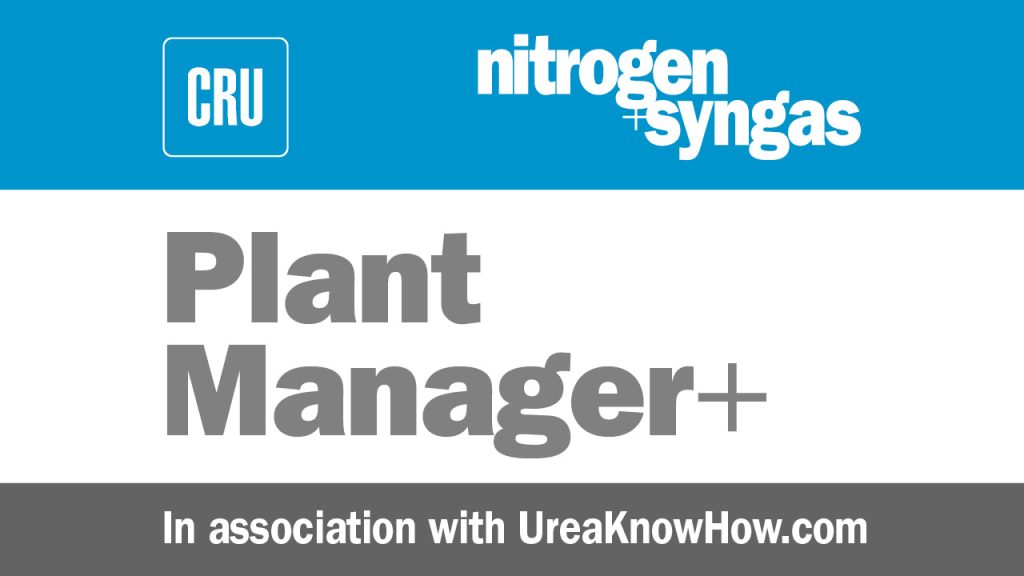Nitrogen+Syngas 371 May-Jun 2021

31 May 2021
Why use a vacuum based leak detection system?
In the March-April issue of Nitrogen+Syngas, Plant Manager+ reported on how to prevent safety risks with a proper leak detection system. In this issue we continue the discussion by further exploring the benefits of vacuum based leak detection systems, which provide several benefits including: less clogging, no build up of pressure, only one ammonia analyser needed for the high pressure equipment, works when there is only one leak detection hole, as well as when there are clogged or no grooves.
High pressure urea equipment consists of a carbon steel pressure bearing wall, which is protected against corrosion by a protective layer – typically an overlay welding or a loose liner. Any leak in a loose liner will lead to a dangerous situation exposing the carbon steel wall to extremely corrosive ammonium carbamate.
Different types of active leak detection systems are available: in a pressurised system, an inert carrier gas stream flows through the leak detection circuits and in a vacuum based system, vacuum pressure is pulled behind the liner.
How to avoid clogging
It is a real challenge to avoid clogging as urea easily crystallises at any temperature even above its melting point due to its polymerisation behaviour forming biuret, triuret etc. with high melting points. This is the main reason for upgrading a passive leak detection system.
A vacuum system is less prone to clogging because, in case of a liner leak, the vacuum pump of the leak detection system will pull the leaking ammonia to the ammonia analyser. Once the leak detection circuit where the leak has occurred has been determined, the leak can be diluted with air reducing or eliminating the risk of clogging via the vacuum pump by opening the atmospheric ball valve.
With a pressurised system each leak detection circuit should contain a flowmeter to verify if there is any flow through the circuit. In case of a leak, the only option available is to increase the setpoint of the flowmeter. However, the amount of air to dilute the leaking fluid will only be marginal and never enough to eliminate the risk for clogging.
Avoiding pressure build-up and the risk of backflow
A vacuum system does not restrict the leaking flow and does not build up pressure or introduce the risk of backflow. In case of a large liner leak, the vacuum pump of the leak detection system will pull the leaking fluid without any restrictions to the ammonia analyser.
With a pressurised system, each leak detection circuit contains a flowmeter to ensure that there is flow through the circuit. However, in the event of a major spill due to a liner leak, the flow-meter will act as a restriction, with the consequence that there will be a pressure build up in the leak detection circuit and backflow will occur leading to clogging of the leak detection circuits and even other high pressure equipment items connected to the same leak detection system.
Ammonia analyser requirements
A reliable pressurised system requires a dedicated ammonia analyser for each item of high pressure equipment to be located as close as possible to the flow meters, whereas a vacuum system needs only one ammonia analyser for all high pressure equipment items and a leak in the tubing will be immediately notified by an increase in the vacuum pressure including an alarm in the DCS.
Detection of a single leak detection hole
In some cases there may only be one leak detection hole in a liner compartment. A typical location is the man way covers of high pressure equipment.
A pressurised leak detection system cannot work in such a case as it needs at least two leak detection holes per liner compartment; one to enter with the inert gas and one to exit to the analyser.
When using a vacuum system that is not an issue; any leaking fluid is pulled via the leak detection hole towards the ammonia analyser by means of the vacuum pump.
The risk of clogging can be minimised by adding a high pressure alarm near to the leak detection hole. Other precautions include having sufficiently large diameter tubing, proper tracing and insulation and a reliable and accurate ammonia analyser.
A system that works when there are clogged grooves or no grooves
A liner compartment is defined as the part of a loose liner between four welds connecting the liner material to the carbon steel of the pressure vessel wall. Typically, grooves are machined along these welds, connected to at least two leak detection holes that are optimally situated as far apart as possible from each other.
Note: there are typically two parallel routes for an inert gas to flow from one leak detection hole to another in a liner compartment. However, in some high pressure equipment, mostly older ones, no grooves are installed.
A pressurised leak detection system cannot work when there are no grooves because the liner will be pressed against the carbon pressure vessel wall due to the internal pressure. A vacuum leak detection system, however, still works even when there are no grooves and fluid will pass due to the roughness and tolerances of the two cylinders.
More often, grooves are clogged due to, for example, earlier liner leaks and corrosion, but bad design or fabrication can also be a cause for a clogged groove.
In case one of the grooves is clogged, in a pressurised leak detection system the inert gas will only flow through the other parallel groove. This means there is no direct detection of the liner area and liner welds close to the clogged groove. This means that half of the critical welds are not covered. A vacuum system in that case still covers the maximum liner area and thus all the liner welds.
In case both grooves are clogged, a pressurised leak detection system is no longer reliable, but a vacuum system will still work.






